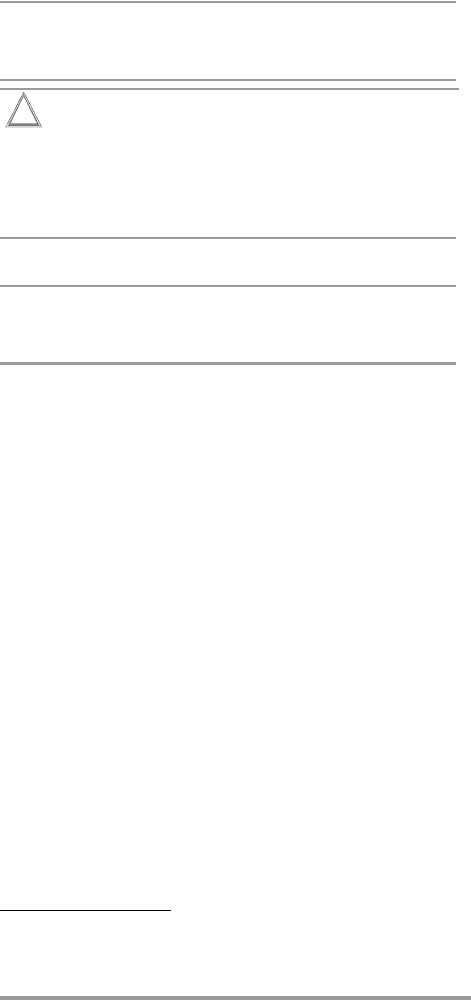Operation Manual
Table Of Contents

GMC-I Messtechnik GmbH 11
Ð Turn the device over so that the control panel faces up and
remove the housing top (i.e. control panel).
Ð Remove the fuse from its holder with the help of an object such
as a test probe, and replace it with a new fuse.
(A replacement fuse is available in the carrying pouch).
Note!
Replace the fuse only in a clean and dust-free environment.
Soiling may possibly impair the correct functioning of the
measuring instrument.
Attention!
!
Use specified fuses only! If fuses with other blowing
characteristics, other current ratings or other breaking
capacities are used, the operator is placed in danger, and
resistors and other components may be damaged.
The use of repaired fuses or short-circuiting the fuse holder
is prohibited.
Ð Set the housing top back into place without applying pressure.
Ð Lay the carrying strap over the metal pin.
Note!
Make sure that the cable from the measuring element is not
pinched when the housing bottom and the housing top are
fitted together.
Ð Position the measuring instrument so that you view it from the
side with the test probe snapped in to the detaining fork. The
support included on the housing top must slide into the guide in
proximity to the test probe holder, and may not be tilted at the
display module. In this way, the housing top can be pressed
onto the housing bottom without applying excessive force.
Ð Hold the housing top and bottom together and turn the entire
instrument over so that the housing bottom faces up.
Ð Retighten the screws.
5.4 Recalibration
The respective measuring task and the stress to which your
measuring instrument is subjected affect the ageing of the
components and may result in deviations from the guaranteed
accuracy.
If high measuring accuracy is required and the instrument is
frequently used in field applications, combined with transport stress
and great temperature fluctuations, we recommend a relatively short
calibration interval of 1 year. If your measuring instrument is mainly
used in the laboratory and indoors without being exposed to any
major climatic or mechanical stress, a calibration interval of 2-3 years
is usually sufficient.
During recalibration
*
in an accredited calibration laboratory
(DIN EN ISO/IEC 17025) the deviations of your instrument in relation
to traceable standards are measured and documented. The
deviations determined in the process are used for correction of the
readings during subsequent application.
*
Verification of specifications or adjustment services are not part of the
calibration. For products from our factory, however, any necessary
adjustment is frequently performed and the observance of the relevant
specification is confirmed.










